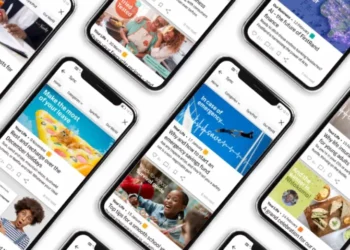Our first instalment of Digital Jargon for Dummies Part One elicited some great responses. Some people found it useful to translate wording that on the surface seemed to be loosely based on English, while others got a better understanding of digital in general. Most of us are just glad that we can use ‘C’ words in conversation like ‘That’s a great CPC you have there’.
So, just in case the first instalment of Digital Jargon wasn’t enough for you, here is part two of the never-ending lexicon of digital to impress all your propeller-head friends and fool a few more into believing that you are in fact a digital whiz kid. This time, we will get a little more technical (but not too technical).
Geo-Fencing/Targeting: This is where a consumer in a particular geographic area is targeted with communication based on the area they are currently in. For example: sending an SMS to alert consumers to a sale on BMWs when the recipient is outside an Audi dealership. Sneaky.
Opt In: A process whereby a user voluntarily agrees to start receiving emails/SMS’s, usually commercial, about a topic of interest. Apparently I have opted in to receive insurance and funeral benefits quotes via SMS (I just wish I could remember when I did this…).
Landing Page: The page on a website where one is taken to after clicking on an advertisement. It is often a page designed to expand on the service or product mentioned in the initial advertisement. If you don’t have a relevant landing page, say goodbye to the user.
Micro site: This is a sub site that does not live with, or on your main site; it is usually created for a specific purpose or promotion and is devoted to that subject. It is essentially a baby website.
Interstitial: A pop up advertisement that loads as you surf between web pages without having been requested by the visitor. It often takes up most of the page and is annoyingly slow to download. Yes, those.
Rich Media: A type of ad that is able to be more than just a static banner. It could include audio, video or animation, provide forms for sign up or it could perform various tasks based on your interaction with it. For example some rich media banners will expand to a much bigger size when you drag your mouse over them, these are called ‘expandable banners’ which actually makes sense thank heavens.
UX or User Experience: As the term implies, it is the experience that a user has when engaging with your site. Duh. Web developers always endeavour to make the ‘User Experience’ as easy and as pleasant as possible for visitors. If a user finds your site to be difficult to use or clumsy they will probably leave soon and/or never return.
Bounce rate: Bounce rate measures the percentage of visitors to your site that leave after only seeing one page. A high bounce rate typically indicates that your landing page isn’t relevant or that you are not giving the visitor a reason to stay and explore other pages within your site. This term is not to be confused with ‘Bouncer Rate’ – the cost per hour to have a large menacing man stand outside your door.
Time spent on site: This is rather self-explanatory but has become a very important measurement to determine if users are finding your site useful, engaging or fun. Obviously if people come to your site and leave immediately you either don’t have much to say or what you have to say is not holding their attention. Either way low time spent on site tends to be a bad thing.
Stickiness: Like that piece of gum that attaches itself to your shoe, then your hand, then your other hand, then back to your shoe, marketers are always trying to find ways to have you visit their site and never leave, or at least find yourself returning regularly. This is done by creating an environment that delivers content or services to the user that they find engaging, fun, and useful or that they feel somehow completes them as a person. A site that does all of those things will have a low bounce rate, a large number of returning visitors, a good ‘time spent on site’ stat and can proudly call itself ‘sticky’.
User Journey: This is the route that a user takes to get to your site and then travels once on your site. For example Ad Banner > Landing Page > Point of purchase > Sale. Because us marketers are manipulative control freaks by nature, we want to ensure that consumers see everything we believe to be relevant to them and/or make a purchase of one of our fantastic products. By mapping out a User Journey we can ensure that a consumer travels a logical path to purchase and never leaves the cocoon we have created until it’s time to emerge a well-dressed yet slightly poorer butterfly.
And with that, this article’s journey comes to an end. I hope you found it simpler than saying Interstitial and stickier than a face full of candy floss. Until next time, gotta bounce. These and other definitions are available in the Glossary section of our Website. https://www.mediashop.co.za
Marino Sigalas is a media strategist at The MediaShop. This post was first published in the company newsletter.

![Digital jargon for dummies [part two]](https://themediaonline.co.za/wp-content/uploads/2014/07/images-1.jpg)












